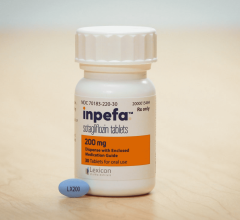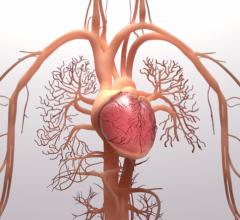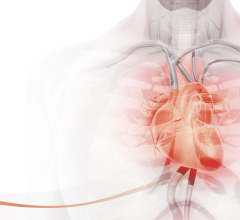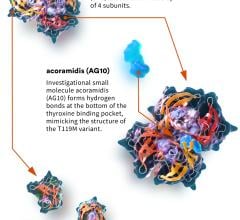July 26, 2010 – A new three-in-one combination drug has been approved by the U.S. Food and Drug Administration (FDA) for the treatment of hypertension in patients who do not respond to dual medical treatment. Daiichi Sankyo Inc. said Tribenzor (olmesartan medoxomil, amlodipine, hydrochlorothiazide) is taken once-daily for the treatment of hypertension in patients who are not adequately controlled on any two of the following antihypertensive drug classes: angiotensin receptor blockers, calcium channel blockers and diuretics. Tribenzor is not indicated for initial therapy.(2)
About 56 percent of patients taking current blood pressure-lowering therapies do not reach current recommended blood pressure goal of less than 140/90 mm Hg or less than 130/80 mm Hg for patients with diabetes, chronic renal disease, or chronic cardiovascular disease.(1,3) More than two-thirds of patients with high blood pressure will require two or more antihypertensive medications in order to achieve goal blood pressure control.(1)
A fixed-dose combination treatment, Tribenzor simplifies dosing regimens, reduces pill burden and has the potential to lower copays for patients that require three medications to keep blood pressure within recommended levels.(1) Research also shows that the use of fixed-dose antihypertensive combination treatments may improve patient compliance as compared to taking each medication separately.(4)
"Generally speaking, it can be a struggle for some patients who need to take multi-pill regimens to take their medications as prescribed," said Joseph L. Izzo, M.D., chief of medicine, Erie County Medical Center, Buffalo, N.Y. "Tribenzor is a three-in-one pill that offers a simple, convenient and consistently effective therapy for patients, and may be just what some patients need to help bring their blood pressure to goal."
The drug combines three widely prescribed antihypertensive medications, each working in a different way, to lower blood pressure.(2) It combines the complementary actions of olmesartan medoxomil (which blocks angiotensin II receptors), amlodipine (which inhibits the entrance of calcium into the blood vessel walls), and hydrochlorothiazide (a diuretic which reduces water volume in the blood).(2) Together these three medications allow blood vessels to relax so that blood can flow more easily.(2)
After eight weeks of treatment, Tribenzor produced highly statistically significantly greater reductions in both systolic and diastolic blood pressures compared to each of the three dual combination therapies. According to the Tribenzor pivotal registration trial that included a total of 2,492 patients with hypertension (mean baseline blood pressure 168.5/100.9 mm Hg), the switch to Tribenzor 40/10/25 mg from each of the following three dual combination therapies: (i) amlodipine/ hydrochlorothiazide 10/25 mg, (ii) olmesartan/hydrochlorothiazide 40/25 mg, and (iii) olmesartan/ amlodipine 40/10 mg, yielded a further mean reduction after eight weeks of treatment in systolic blood pressure/diastolic blood pressure of 8.1/5.4 mm Hg, 7.6/5.4 mm Hg, and 8.4/4.5 mm Hg, respectively.(2)
The most common adverse reactions (incidence greater than or equal to 2 percent) seen in clinical trials for Tribenzor were dizziness, peripheral edema, headache, fatigue, nasopharyngitis, muscle spasms, nausea, upper respiratory tract infection, diarrhea, urinary tract infection, and joint swelling.(2)
For more information: www.tribenzor.com
References:
1. U.S. Department of Health and Human Services, National Institutes of Health, National Heart, Lung and Blood Institute. “The Seventh Report of the Joint National Committee on Prevention, Detection, Evaluation, and Treatment of High Blood Pressure.” NIH Publication 04-5230. August 2004.
2. Daiichi Sankyo Inc. Tribenzor Prescribing Information.
3. American Heart Association. High Blood Pressure Statistics. Available at:
www.americanheart.org/presenter.jhtml?identifier+4621. Accessed on May 5, 2010.
4. Gupta AK, et al. “Compliance, Safety, and Effectiveness of Fixed-Dose Combinations of Antihypertensive Agents: A Meta-Analysis. Hypertension.” 2010;55;399-407.
5. American Heart Association. Blood Pressure. Available at:
www.americanheart.org/presenter.jhtml?identifier=2114. Accessed April 24, 2010.


 July 10, 2024
July 10, 2024 








